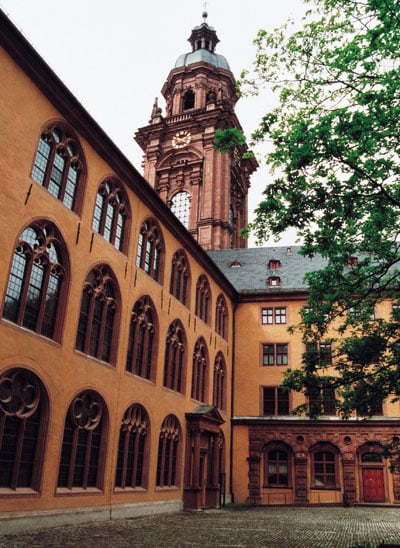
Who was Eduard Selling
Eduard Selling was a German mathematician and an inventor of calculating machines.
Early life
Eduard Selling was born on November 5, 1834, in Ansbach, Bavaria, Germany. Selling studied mathematics at Georg-August-Universität in Göttingen and Ludwig-Maximilians-Universität in München, where he was a student of the famous German mathematician and astronomer Philipp Ludwig Ritter von Seidel.
Quick Facts
- Full Name
- Eduard Selling
- Birth
- November 5, 1834
- Death
- January 31, 1920
- Net Worth
- Unknown
- Children
- Unknown
- Nationality
- German
- Place of Birth
- Bavaria, Germany
- Fields of Expertise
- [“Mathematics”,”Inventor”]
- Institutions
- Bayerische Julius-Maximilians-Universität and Astronomical Institute
- Contributions
- Calculating machine
Eduard Selling obtained a doctorate degree at Universität München in 1859 under the supervision of the famous German mathematician, Bernhard Riemann. Riemann made contributions to analysis, number theory, and differential geometry. He’s most known for his formulation of the Riemann integral.
Career
Associate Professor of Mathematics
In 1860 Eduard Selling was appointed as an associate professor of mathematics at the Bayerische Julius-Maximilians-Universität in Würzburg. Selling held this position and taught mathematics and astronomy until his retirement in 1906. He was recommended for this position by the famous mathematician Leopold Kronecker.
During this time he wrote a paper on binary and ternary quadratic forms that was later translated into French.
Curator of the Astronomical Institute
Selling was appointed as a curator of the Astronomical Institute in 1879. He was a well-known and talented mathematician. He published a series of works on number theory and then on insurance mathematics. Selling also developed models with which the pension system in Bavaria could be rearranged on behalf of various ministries.

What is Eduard Selling known for?
Selling is a constructor of several calculating machines. His machines demonstrated exceptional ideas and ingenuity. Unfortunately, they were complex and difficult to manufacture, so they didn’t achieve any market success.
Calculating Machines
In 1886 Eduard Selling received a patent for his first variant of a calculating machine. It had a very unique construction.
Later, Selling received several more patents. He received three patents in Germany for the improvement of his machine, one patent in Austria, one in Belgium, one in Switzerland, one in France, two in England, one in Italy, and one in the USA.
The machine was put in production in small quantities. About 30-40 machines were produced until the end of 1898, by the Workshop for Precision Mechanics of Max Ott, in Munich. The machine cost 400 marks. Selling’s calculating machine was awarded at the Chicago World Fair in 1893.
Christel Hamann, the future genius of mechanical calculating machines, helped in constructing Sellings calculating machines.
The internal mechanism of the machine is based on the so-called Nürnberger Schere (a popular toy of this time), in English, this mechanism is called Nuremberg scissors or lazy-tongs. The calculating wheels of a regular calculating machine (which transfers the motion to the digital wheels) are replaced by lazy-tongs.
To the joints of these the ends of racks are pinned, and as they are stretched out the racks are moved forward 0 to 9 steps, according to the joints they are pinned to. The racks gear directly in the digital wheels and the figures are placed on cylinders. The carrying is done continuously by a train of epicycloidal wheels. The working is thus rendered very smooth, without the jerks that the ordinary carrying tooth produces; but the arrangement has the disadvantage that the resulting figures do not appear in a straight line, a figure followed by a 5, for instance, is already carried half a step forward. This is not a serious matter in the hands of a mathematician or an operator using the machine constantly, but it is serious for casual work. Anyhow, it has prevented the machine from being a commercial success. This was the second machine with continuous tense carry, after the calculating machine of Chebyshev.
For ease and rapidity of working it surpasses all other machines. Since the lazy-tongs allow an extension equivalent to five turns of the handle, if the multiplier is 5 or under, one push forward will do the same as five (or fewer) turns of the handle, and more than two pushes are never required.
In his last patent (from 1894), Selling attempted to design an electronic calculating machine (with no engine, but through contacts and electromagnets), but apparently without any success.
The calculating machines of Eduard Selling demonstrated exceptional ideas and ingenuity but were complex and difficult for manufacturing and work, that’s why they didn’t achieve any market success.
Edward Selling: Marriage, Divorce, Children, and Personal Life
Eduard Sellings’s personal life is left unknown. He died on January 31, 1920, in München.
Eduard Selling: Awards and Achievements
No awards were recorded.
Eduard Selling: Published Works and Books
None.
The image featured at the top of this post is ©Unknown author / public domain


